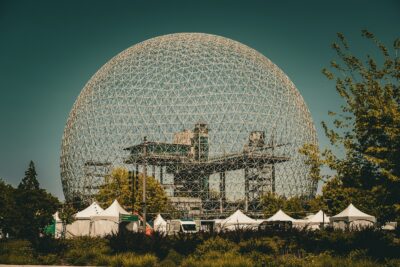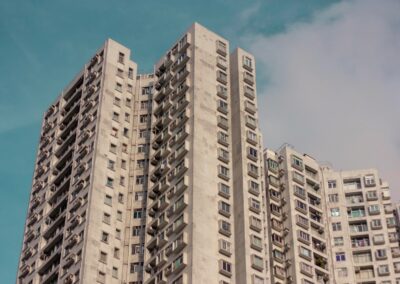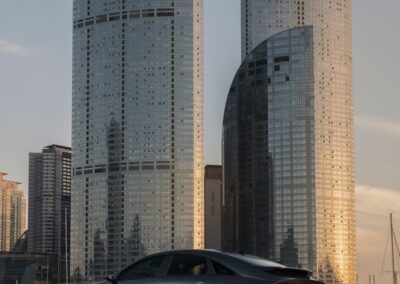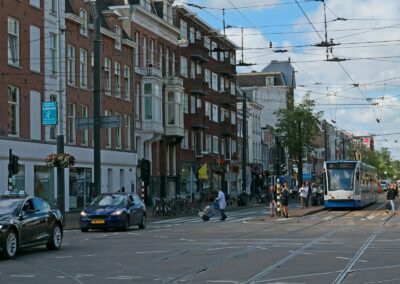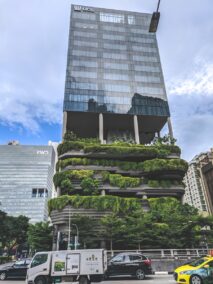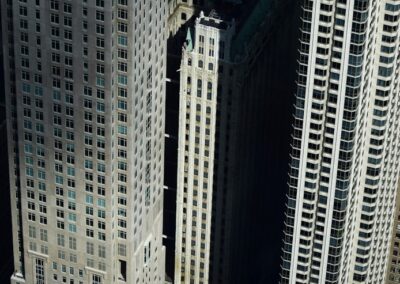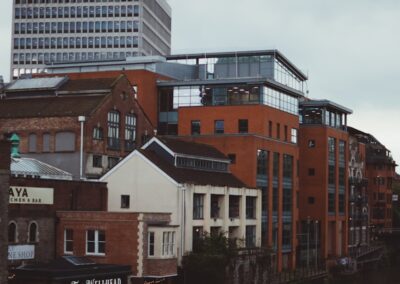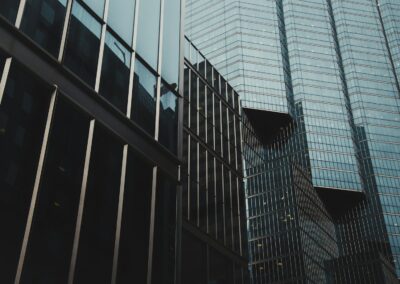Building for the Future: Sustainable and Resilient Architecture
Integrating Green Building Practices for Climate Resilience
The adoption of green building practices for climate resilience is becoming increasingly essential in regions like Saudi Arabia and the UAE. As these areas continue to experience rapid urbanization and economic growth, integrating sustainable and resilient design features into buildings is crucial for mitigating the impacts of extreme weather events and changing climate conditions. These practices not only enhance the durability and efficiency of buildings but also contribute to broader sustainability goals.
Green building practices encompass a range of strategies aimed at reducing the environmental footprint of construction and enhancing the resilience of structures. In Saudi Arabia, where the Vision 2030 initiative emphasizes sustainable development, incorporating green building practices is aligned with national priorities. This includes using materials with low environmental impact, optimizing energy efficiency, and designing buildings to withstand extreme weather conditions. By adopting these practices, developers in Riyadh and other cities can create structures that are both environmentally friendly and resilient to climate-related risks.
Dubai, known for its innovative approach to urban development, has also been a leader in promoting green building practices. The Dubai Green Building Regulations and Specifications mandate the use of sustainable materials, energy-efficient systems, and water-saving technologies in new constructions. These regulations are designed to enhance the climate resilience of buildings, ensuring they can withstand the increasing frequency and intensity of extreme weather events. By prioritizing green building practices, Dubai is setting a standard for sustainable and resilient urban development in the region.
The Benefits of Green Building Practices
Implementing green building practices offers numerous benefits that extend beyond climate resilience. These practices contribute to environmental sustainability, improve public health, and enhance economic efficiency. In regions like Saudi Arabia and the UAE, where sustainable development is a key focus, these benefits align with national and local goals, making green building practices a strategic priority.
One of the primary benefits of green building practices is the reduction of greenhouse gas emissions. By using energy-efficient systems and renewable energy sources, green buildings significantly lower their carbon footprint. This is particularly important in Saudi Arabia and the UAE, where reducing emissions is a critical component of national climate strategies. Additionally, green buildings often incorporate features such as green roofs and walls, which can help to absorb CO2 and further mitigate climate change impacts.
Improving public health is another significant advantage of green building practices. Buildings that utilize non-toxic materials, ensure proper ventilation, and maintain good indoor air quality contribute to the well-being of their occupants. In urban centers like Riyadh and Dubai, where air pollution is a growing concern, green buildings can provide a healthier living and working environment. This not only benefits individuals but also enhances productivity and reduces healthcare costs, contributing to broader economic gains.
Moreover, green building practices can lead to substantial cost savings over the lifecycle of a building. Energy-efficient systems, water-saving technologies, and sustainable materials reduce operational and maintenance costs, making green buildings economically attractive. In the UAE, where the government offers incentives for sustainable construction, these cost savings can be further amplified. By investing in green building practices, developers and businesses can achieve long-term financial benefits while contributing to environmental and social sustainability.
Technological Innovations in Green Building
The integration of modern technology with green building practices can significantly enhance their effectiveness and efficiency. Advanced technologies such as artificial intelligence (AI), the Internet of Things (IoT), and blockchain are transforming the construction industry, making it possible to design and manage buildings in ways that were previously unimaginable. In regions like the UAE and Saudi Arabia, where technological innovation is a key driver of development, these technologies can play a crucial role in advancing green building practices.
AI and machine learning can optimize the design and operation of green buildings. For example, AI algorithms can analyze data from various sources to predict energy consumption patterns and optimize energy use in real time. This can lead to significant energy savings and improved efficiency. In Dubai, where smart city initiatives are transforming urban infrastructure, AI-powered green buildings can contribute to the city’s sustainability and resilience goals.
The IoT enables the real-time monitoring and management of building systems, enhancing the efficiency and responsiveness of green buildings. By connecting sensors and devices to a centralized network, the IoT can provide valuable data on energy use, water consumption, and indoor air quality. This data can be used to optimize building operations, detect and address issues promptly, and ensure that the building remains sustainable and resilient over time. In Riyadh, where smart infrastructure is a priority, IoT-enabled green buildings can contribute to the city’s vision of sustainable urban development.
Blockchain technology can enhance the transparency and accountability of green building practices. By creating a decentralized and tamper-proof ledger of transactions, blockchain can ensure the traceability and integrity of sustainable materials and practices. This transparency can help to build trust among stakeholders, reduce fraud, and improve the overall quality of green buildings. In Saudi Arabia, where transparency and accountability are crucial for achieving sustainable development goals, blockchain can play a vital role in supporting green building practices.
Conclusion: Building Resilient and Sustainable Communities
In conclusion, integrating green building practices for climate resilience is essential for creating sustainable and resilient urban environments. For regions like Saudi Arabia and the UAE, where rapid urbanization and economic growth are accompanied by increasing climate risks, adopting these practices is a strategic priority. By incorporating sustainable materials, energy-efficient systems, and resilient design features, green buildings can mitigate the impacts of extreme weather events and contribute to broader sustainability goals.
For business executives and leaders, understanding and leveraging the potential of green building practices is crucial for driving sustainable development and achieving long-term success. By investing in green building practices and supporting the integration of advanced technologies, businesses can create structures that are not only environmentally friendly but also resilient to climate-related risks.
As the world continues to grapple with the challenges of climate change, the importance of green building practices cannot be overstated. By embracing these practices and supporting policies and incentives that promote their adoption, regions like Saudi Arabia and the UAE can lead the way in creating sustainable and resilient communities. These efforts not only benefit the environment but also enhance economic stability and improve the quality of life for all residents.
#GreenBuilding #ClimateResilience #SustainableArchitecture #UAEInnovation #SaudiArabia #ModernTechnology #BusinessLeadership #AI #Riyadh #Dubai


